As with all of our rambles, there’s usually so much to explore that it’s easy to get distracted. If we had several days in an area we could do a very thorough expedition. However, with a short time we have to stay focused. I had one place I definitely wanted to visit, and I wanted to make sure we had enough time to give it the attention it deserved.
Old Waxhaw Presbyterian Church
As a taphophile, I’d been wanting to visit the Old Waxhaw Presbyterian Church for ages. Several of the headstones in the cemetery are highlighted in David Gillespie’s book, A Brief Treatise on Tomb and Grave Stones of the Eighteenth Century. I knew the cemetery contained other unusual examples of funerary art, so we headed in that direction.
Old Waxhaw Presbyterian is three miles southeast of the SC-NC Corner Marker. The cemetery is on the National Register, but the current sanctuary, built in 1896, doesn’t seem to be listed.
The congregation formed in the early 1700s and the first church was built sometime in around 1756. The current building is the third to serve the congregation. While historic, the architecture wasn’t unusual. We decided to turn our attention to the cemetery.
Right next to the church is a cross-shaped enclosure built of brick. The area enclosed several graves, but was locked. A crest on the iron gates bore the name W. R. Davie.
William Richard Davie served as governor of North Carolina in the early 1800s and the enclosure contains the graves of his family.
Next to the Davie’s plot the Waxhaw Chapter of the Daughters of the American Revolution have erected a monument to Elizabeth Hutchinson Jackson, the mother of Andrew Jackson. Smaller markers commemorate members of the congregation who fought in the Revolutionary War, some of which were killed in Buford’s Massacre. These are not actual burials, but memorials. Elizabeth Jackson is actually buried in Charleston.
The cemetery proper extends for several acres from this point. The extent of the cemetery was daunting, and I really wished we had skipped some of the earlier trips and headed straight here.
There was a marker for Andrew Jackson, Sr., father of President Andrew Jackson. The original marker was lost.
We found another unusual enclosure. This one had a high stone wall with a stairway made of embedded rock. There were several graves enclosed and additional inscriptions on the actual walls of the structure.
The funerary art did not disappoint. There were several stones with the winged souls motif, as well as other artistic elements.
So many of the headstones were hand-carved that it was hard to keep track of them all. The lettering was distinctive, and some of the stones still bore the lines etched to keep the letters straight.
I was amazed at the amount of carving on these stones, especially since it had to be hand done. Many of these headstones had the individual’s information on one side with a verse inscribed on the reverse.
Some of these seem trite to us now, but were in fashion in the 18th Century. The grave of James Crawford had the following inscription, which seemed to be popular on other graves of that era…
Remember friends as you pass by as you are now so once was I. As I am now so you must be prepare yourself to follow me.
There were other equally florid quotations. This one was taken from an Isaac Watts hymn and was also popular in this era. This particular headstone is unique in that the stone mason ran out of room for the word “proclaims”. He got first part of the word, but the rest is etched above.
Hear what the voice from heaven proclaims. For all the pious dead! Sweet is the savour of their names, And soft their dying bed.
Isaac Watts
As you might imagine, with all of these hand-carved stones, there were lots of signature stones. There was an early Thomas Walker and several from the firm of Walker & Evans. Other names appeared throughout the cemetery.
I tried to imagine the expense and trouble of hauling a headstone from Thomas Walker’s shop in Charleston all the way to the backwoods of South Carolina.
There was much more we could have explored in the Old Waxhaw Cemetery, but daylight was rapidly fading. We decided to continue our travels.
Continued on the next page…

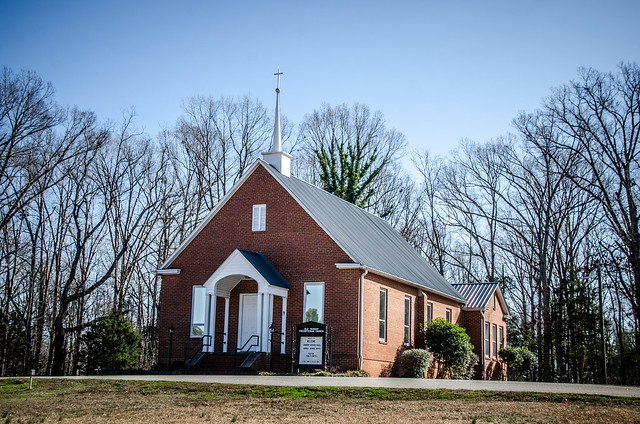
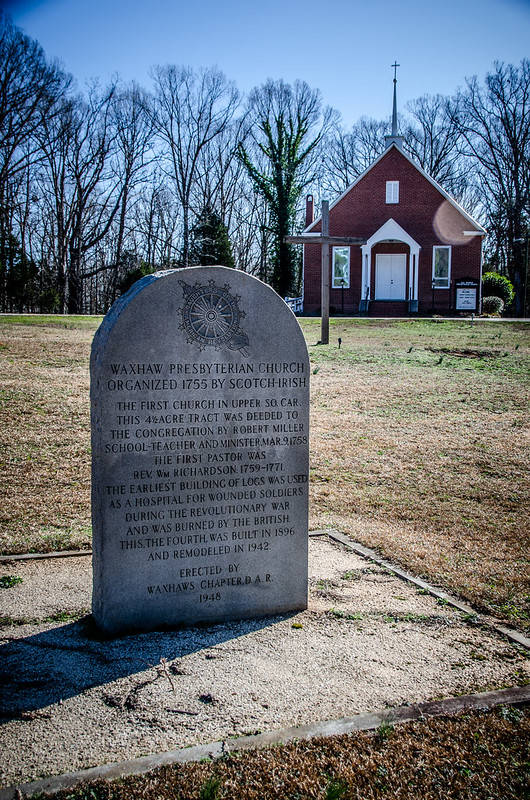


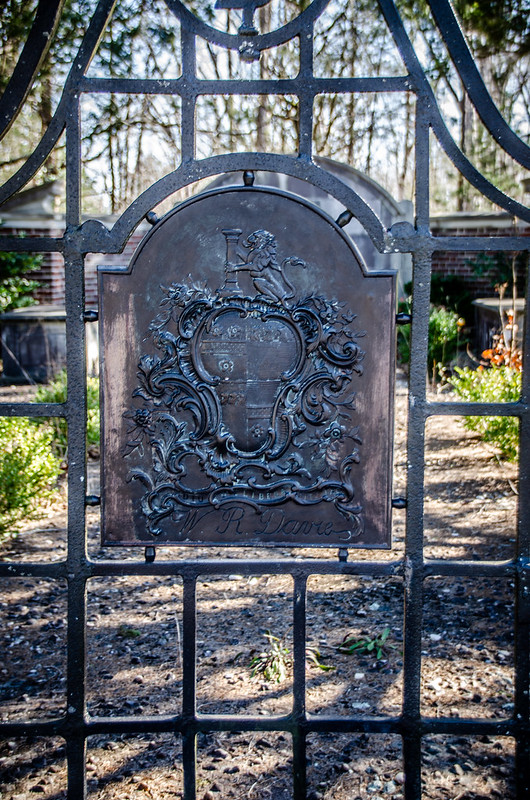



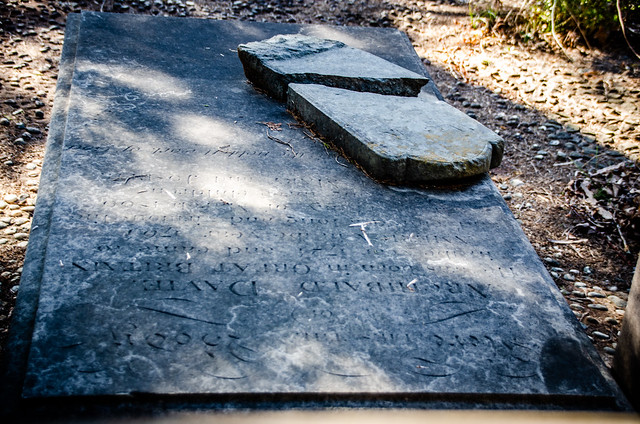
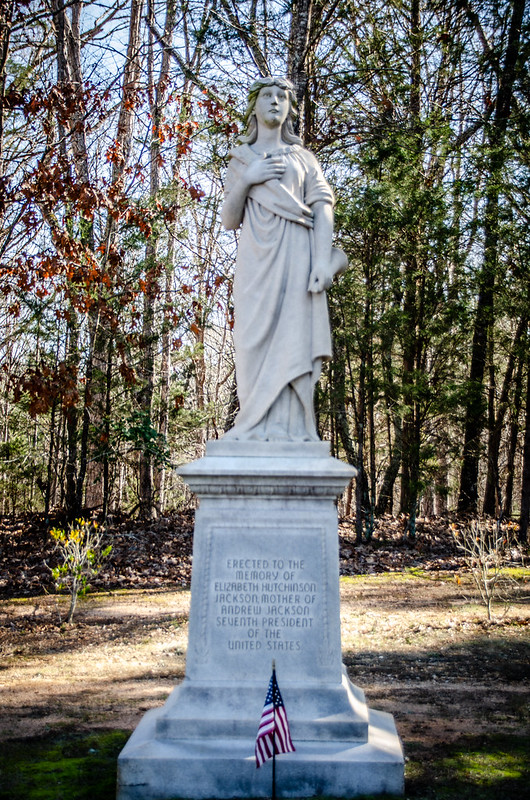

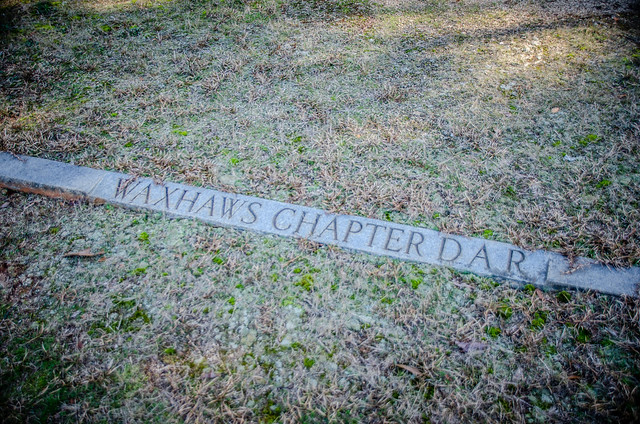

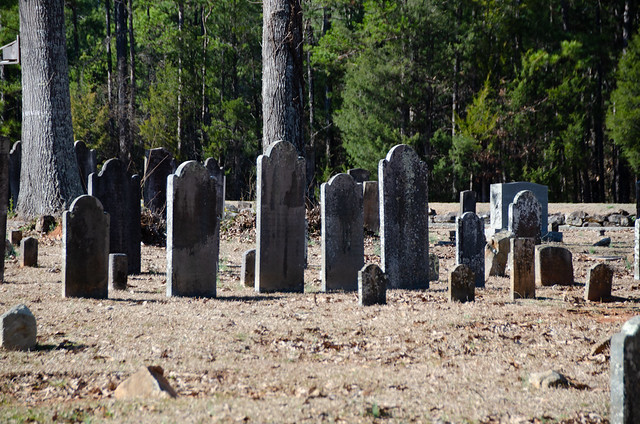

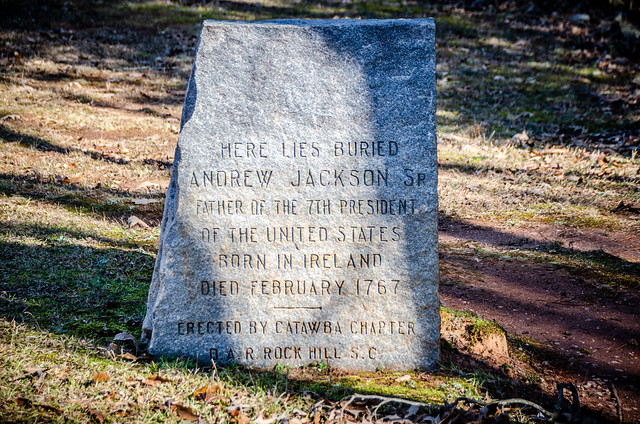




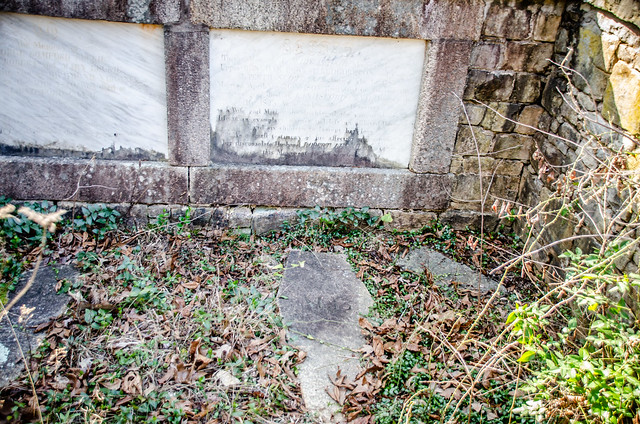

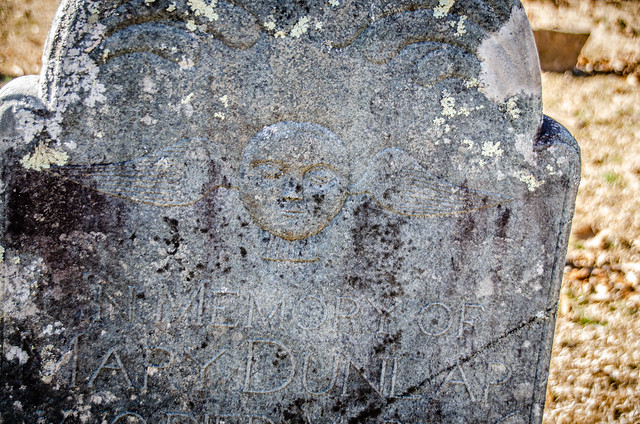
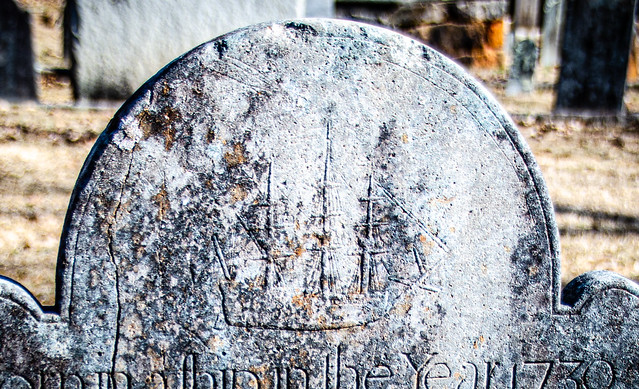


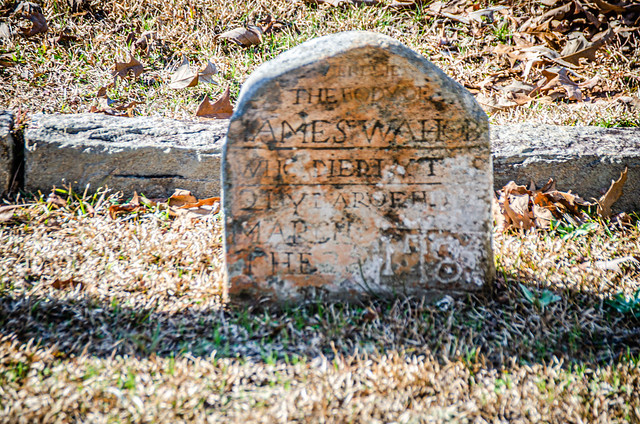
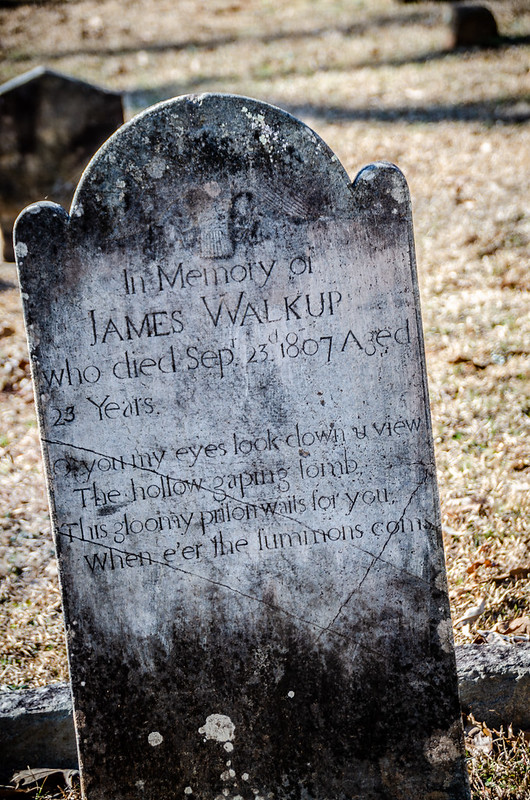
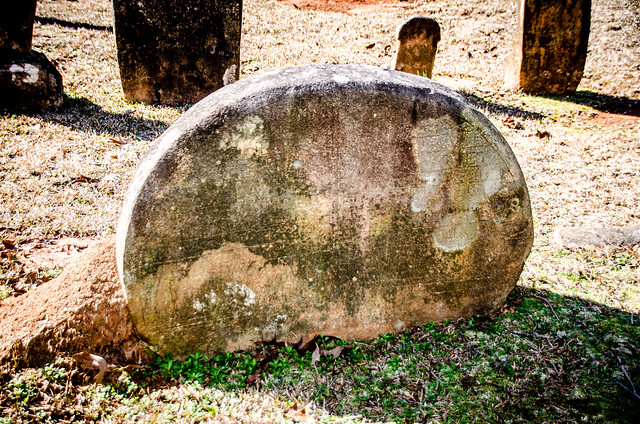
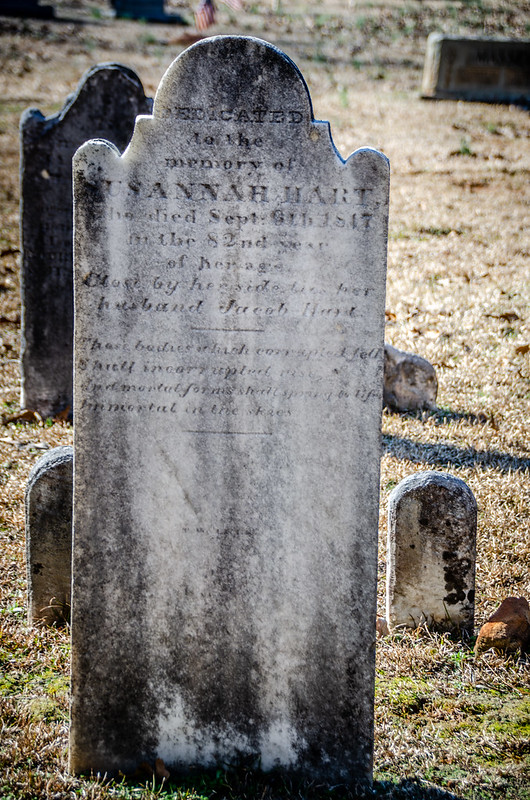


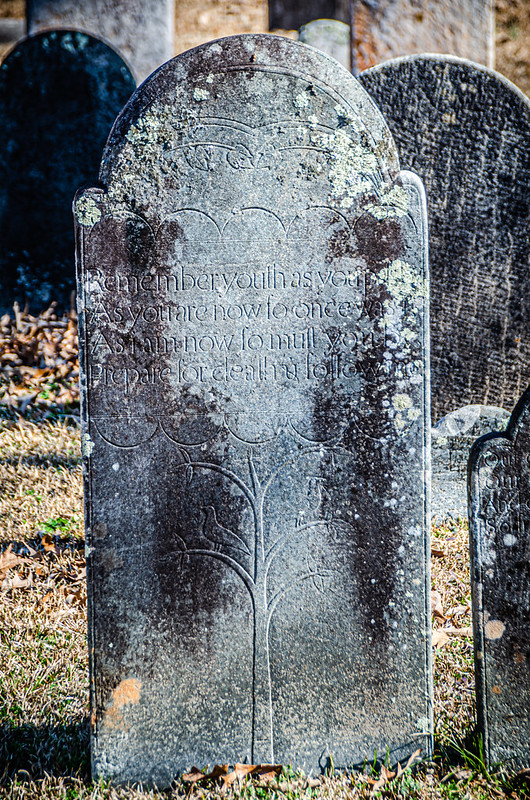
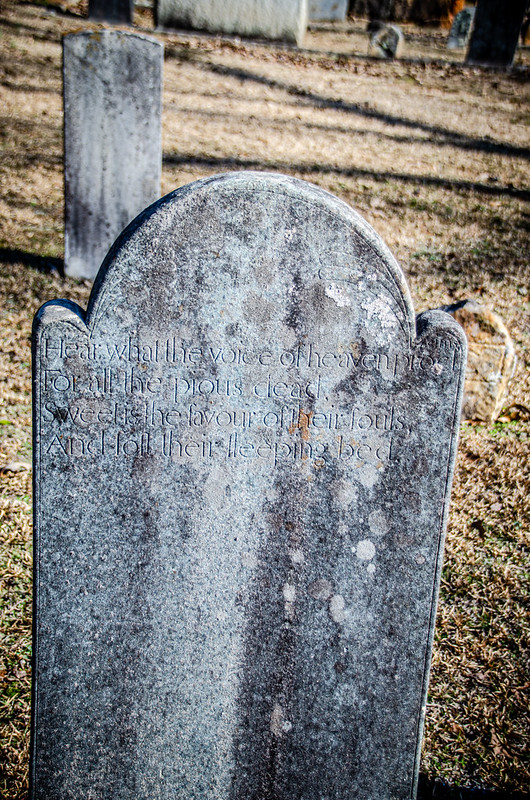
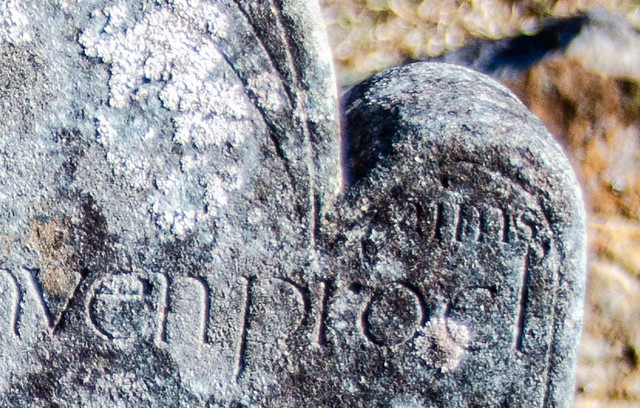




Amazing!! I look forward to exploring the area.
Several things caught my attention. The Tower of Babel certainly does not look like any ziggurat I ever saw pictured. I guess that would have put me a little off when it comes to the other exhibits, unless they had an explanation of why this tower looks so different.
I had a bit of a funny thought when I was reading your comments about the campground. The newer structures, the things that did not look quite authentically ramshackle or historic. I was reminded in this of the scene in the fourth harry potter book. At the campground for the Quidditch World Cup. Some of the tents did not definitely look Muggle at all. The rambling 2 level tents with turrets and towers and what not. Anyway, it is amazing what one sees sometimes. And quite a story in itself. Sounds like a fantastic trip!